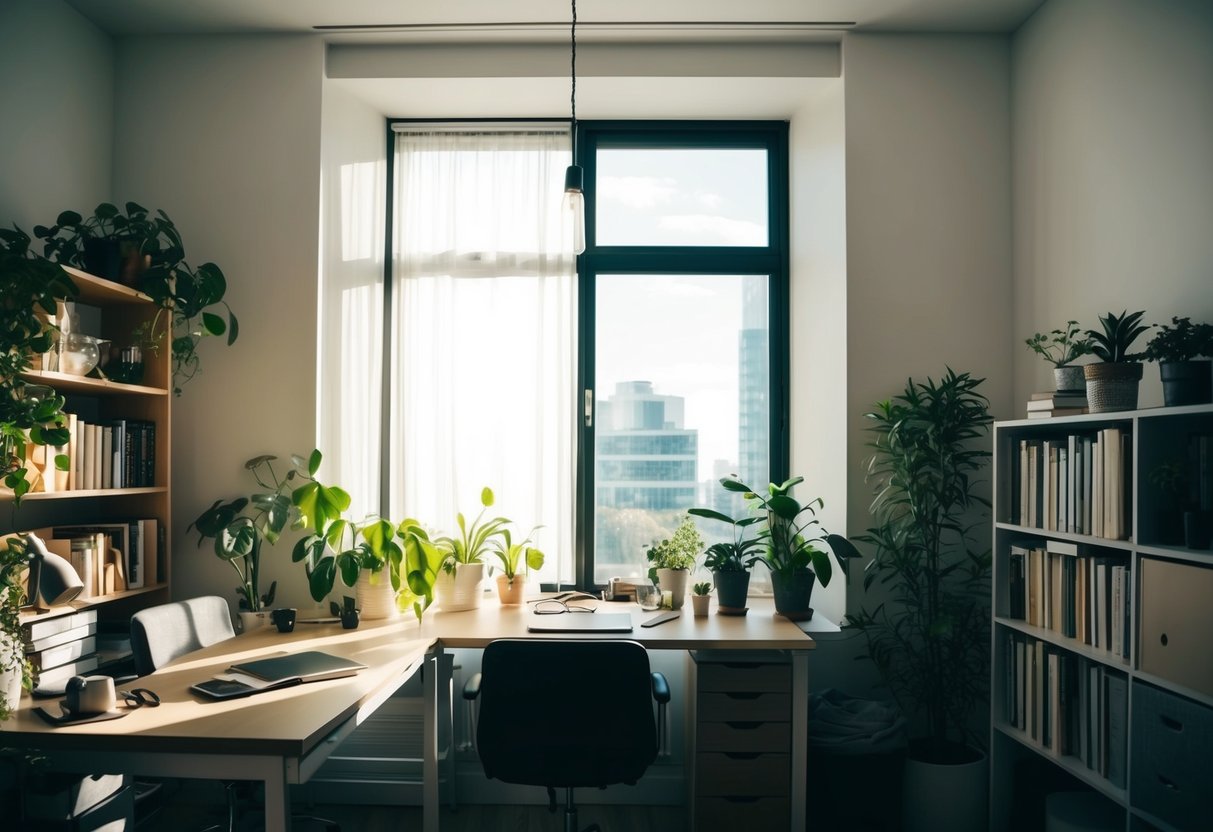DIY Home Office Setup: Creating a Productive Workspace on a Budget
Furniture Selection

Selecting suitable furniture enhances productivity in a home office. A carefully chosen desk, an ergonomic chair, and additional seating provide comfort and functionality, ensuring the workspace is conducive to efficient work.
Finding the Perfect Desk
The desk is a central piece of any office. It is important to determine the ideal size based on room dimensions and work needs. For those with minimal space, a compact desk may suffice. Larger areas might accommodate L-shaped or standing desks for added versatility.
Material selection impacts durability and aesthetics. Wood, with its classic appeal, and metal, known for modern looks, are popular choices. Storage is another consideration. Desks with built-in drawers or shelves help keep the workspace organized, seamlessly integrating storage solutions with workspace needs.
Choosing an Ergonomic Chair
An ergonomic chair is essential for comfort, especially during long working hours. Key features include adjustable height, lumbar support, and armrests. These adjustments accommodate various body types and sitting preferences. Mesh-backed chairs are popular for better air circulation, while leather chairs offer a premium feel.
Cushion quality significantly affects comfort levels. High-density foam or memory foam seat cushions provide better support. It’s crucial to ensure that chairs allow for good posture, which reduces back strain and enhances concentration. Selecting a chair with swivel and wheeled bases also enhances mobility within the workspace.
Adding Additional Seating Options
Supplementary seating options can transform a workspace, adding flexibility and comfort. Options such as benches, stools, or small sofas enable seating variety for casual discussions or brainstorming sessions. When selecting additional seating, consider space constraints and frequency of use.
Materials play a role in aesthetic and practicality. Fabric, leather, or plastic options vary in maintenance and durability. Look for compact and stackable designs if space-saving is important, making them ideal for home offices with limited room. The inclusion of varied seating styles fosters a dynamic work environment that can enhance creativity and comfort.
Maximizing Productivity
Creating a productive workspace involves making thoughtful choices about color, decor, organization, and minimizing distractions. Carefully chosen elements can significantly affect one’s ability to focus and reduce stress, ultimately boosting productivity.
The Role of Color and Decor
Color and decor can deeply influence mood and focus in a home office. Soft blues and greens often create a calming atmosphere, which can reduce stress during busy days. Adding personal touches like artwork or motivational quotes can foster a sense of ownership and inspiration. It’s important to strike a balance; too much decor can become distracting. Optimal choices enhance the aesthetics without overwhelming the space, supporting a focused and productive environment.
Organizational Tools to Declutter
Organization is a cornerstone of productivity. Utilizing filing cabinets, shelves, or baskets is essential to keep the workspace tidy. Labels can provide easy access to necessary items, preventing time wasted searching for things. Cable organizers can help manage wires, maintaining a clean desk. Keeping the workspace free from unnecessary clutter allows for clear thinking and efficient workflow, directly impacting productivity.
Creating a Distraction-Free Zone
Limiting distractions is crucial for maintaining focus. Positioning the desk away from windows minimizes external interruptions. Using noise-canceling headphones or a white noise machine can effectively diminish auditory disruptions. Establishing clear boundaries with family or housemates ensures dedicated work time. A well-planned environment, free from distractions, supports sustained attention, leading to more productive work sessions.
Lighting and Ambiance
Proper lighting significantly affects productivity and creativity in a home office. Selecting the right desk lamp and enhancing ambient lighting can create an inviting and efficient workspace.
Desk Lamp Selection
A well-chosen desk lamp is crucial for focused tasks. It is advisable to prioritize models with adjustable features, allowing for directing light precisely where needed. LED desk lamps are popular due to their energy efficiency and longevity. Dimmable options provide versatility, adapting the brightness to suit different tasks and times of day. It can be beneficial to consider lamps with color temperature settings, offering a range from warm to cool lighting. These settings can help reduce eye strain and maintain focus throughout varied activities. Design is also important; a sleek, minimalist style can seamlessly integrate into most decor, maintaining a clutter-free aesthetic essential for enhancing concentration.



